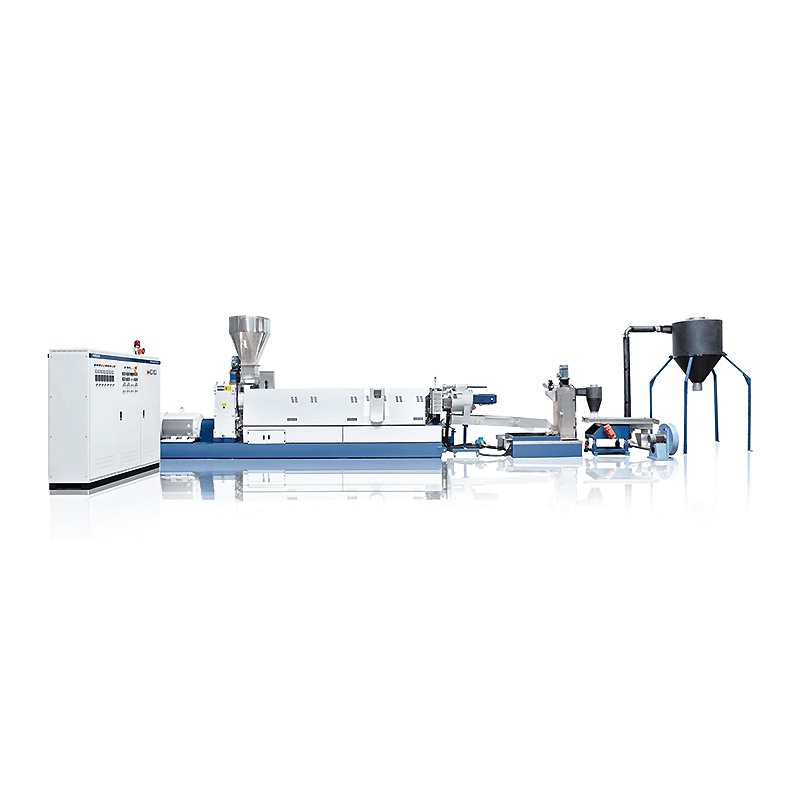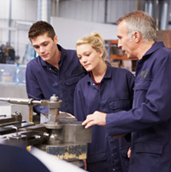The PVC Plastic Pelleting Machine represents a specialized solution designed for the efficient granulation of PVC compounds and wood plastic composites (WPC). This equipment is engineered specifically for hot-cutting granulation processes, setting it apart from machines designed for other polymer types or granulation methods. A key differentiator of this PVC Plastic Pelleting Machine is its high cutting precision, which ensures consistently uniform pellet size and shape, critical for downstream processing and final product quality in PVC applications. Furthermore, it delivers high granulation efficiency, enabling faster throughput and optimized production cycles. The design prioritizes operational practicality, featuring convenient installation procedures and enhanced mobility, allowing for greater flexibility in plant layout adjustments or relocation needs compared to more cumbersome systems. These combined attributes of precision cutting, operational efficiency, and ease of handling make this PVC Plastic Pelleting Machine a focused tool for producers requiring reliable and adaptable granulation for PVC and related materials.
PVC Plastic Pelleting Machine Core Advantages and Features:
Designed for Hot-Cutting Granulation:
Features: This PVC Plastic Pelleting Machine's core process is hot-cutting granulation, ideal for processing heat-sensitive materials such as PVC and wood-plastic composites. The material is directly cut into pellets by a high-speed rotating cutter while still molten or softened, eliminating the cooling and pulling steps required in cold-cutting processes.
Attractive Points: This method significantly simplifies the process flow and reduces equipment footprint. It is particularly suitable for processing PVC formulations with high viscosities or those requiring specific pellet shapes, as well as wood-plastic composites.
High Cutting Precision:
Features: The machine is equipped with a sophisticated cutting system and strictly controlled cutting parameters (such as blade speed, cutter gap, and die temperature).
Attractive Points: This high precision ensures highly uniform PVC or wood-plastic pellets with a regular shape (such as cylindrical or spherical). Uniform pellet size is crucial for subsequent drying, conveying, extrusion, or injection molding processes, effectively reducing production fluctuations and improving the consistency of final product quality.
High Efficiency:
Features: An optimized hot-cutting process combined with an efficient drive system and cutting design achieves higher output per unit time.
Attractive Points: High production efficiency directly reduces energy consumption and labor costs per unit of output, increasing overall production line capacity and meeting large-scale production or high-speed requirements.
Convenient Installation & Moving:
Features: This PVC Plastic Pelleting Machine is designed with user convenience in mind, typically featuring a modular or compact design with a clear structure.
Attractive Points: "Easy Installation" means faster assembly and commissioning upon arrival, shortening time to production. "Easy Mobility" provides flexibility in production layout, significantly reducing the time and cost of moving the machine, whether for line adjustments, equipment maintenance, or factory relocation. It is particularly suitable for high-mix production or space-constrained environments.
Primary Applications:
PVC Pellet Production: PVC powder (including virgin and various recycled materials) is mixed and plasticized with stabilizers, plasticizers, and fillers. This machine then pelletizes the mixture to produce raw material pellets for pipes, profiles, sheets, wire and cable, shoe soles, and other products.
Wood-Plastic Composite (WPC) Pelletization: Wood powder (or plant fibers such as bamboo powder and rice husk powder) is mixed and plasticized with PVC (or PE/PP) resin and additives. This machine then hot-cuts and pelletizes the mixture to produce WPC pellets for applications such as outdoor flooring, guardrails, and landscaping products.
Other Applicable Materials: Depending on the specific formulation and process, this machine may also be suitable for hot-cut pelletizing other thermoplastic materials with similar processing characteristics.
This PVC Plastic Pelleting Machine, with its specialized design for PVC and wood-plastic hot-cutting processes, high-precision cutting for high-quality pellets, high production efficiency for improved economic benefits, and user-friendly installation and mobility, is an ideal choice for those seeking stable, efficient, and flexible production in the PVC and wood-plastic composite processing industry.



 عربى
عربى











